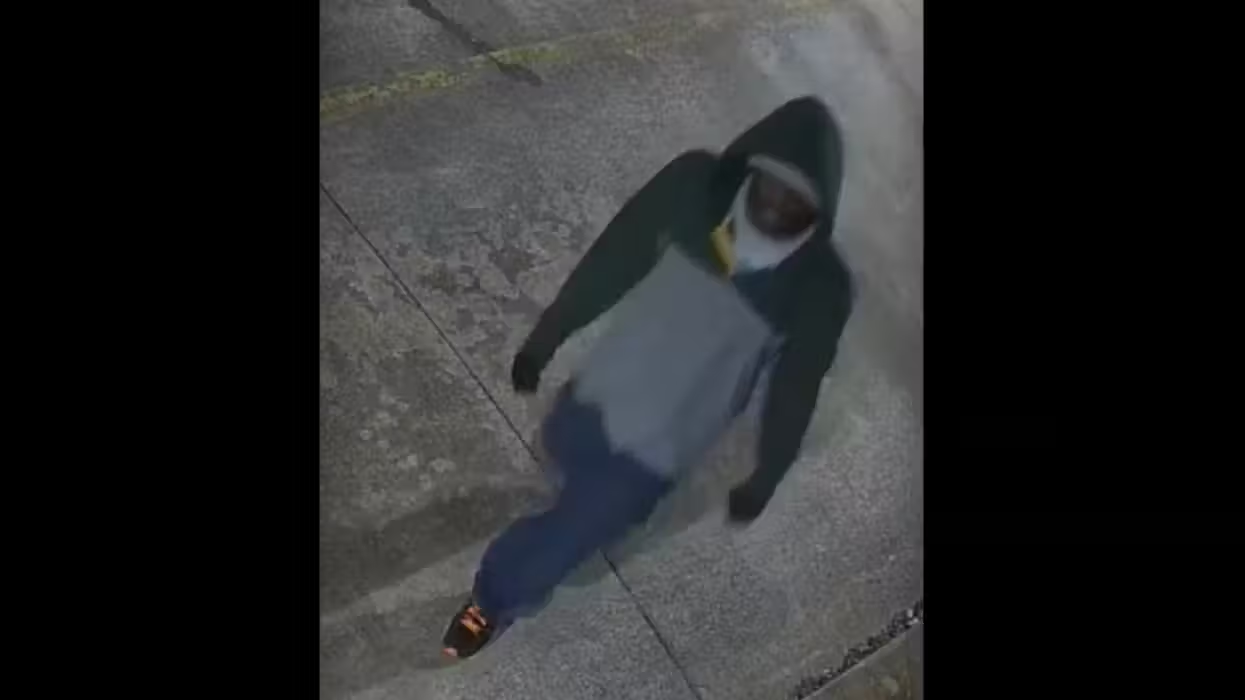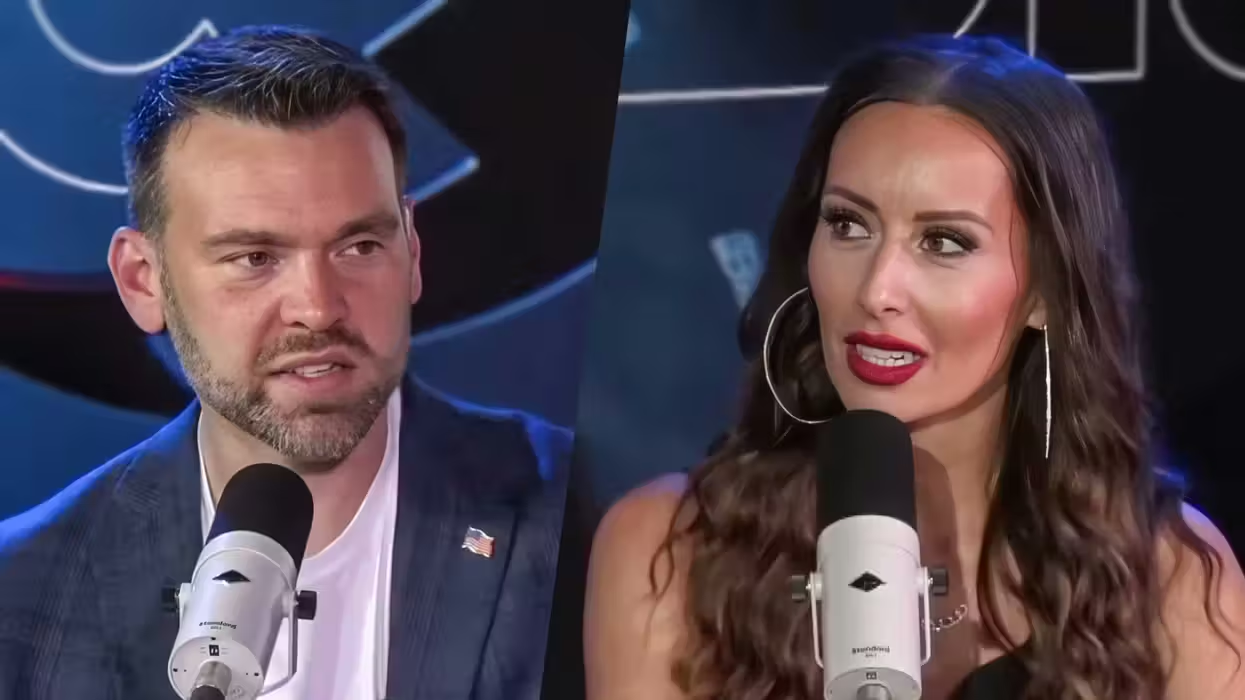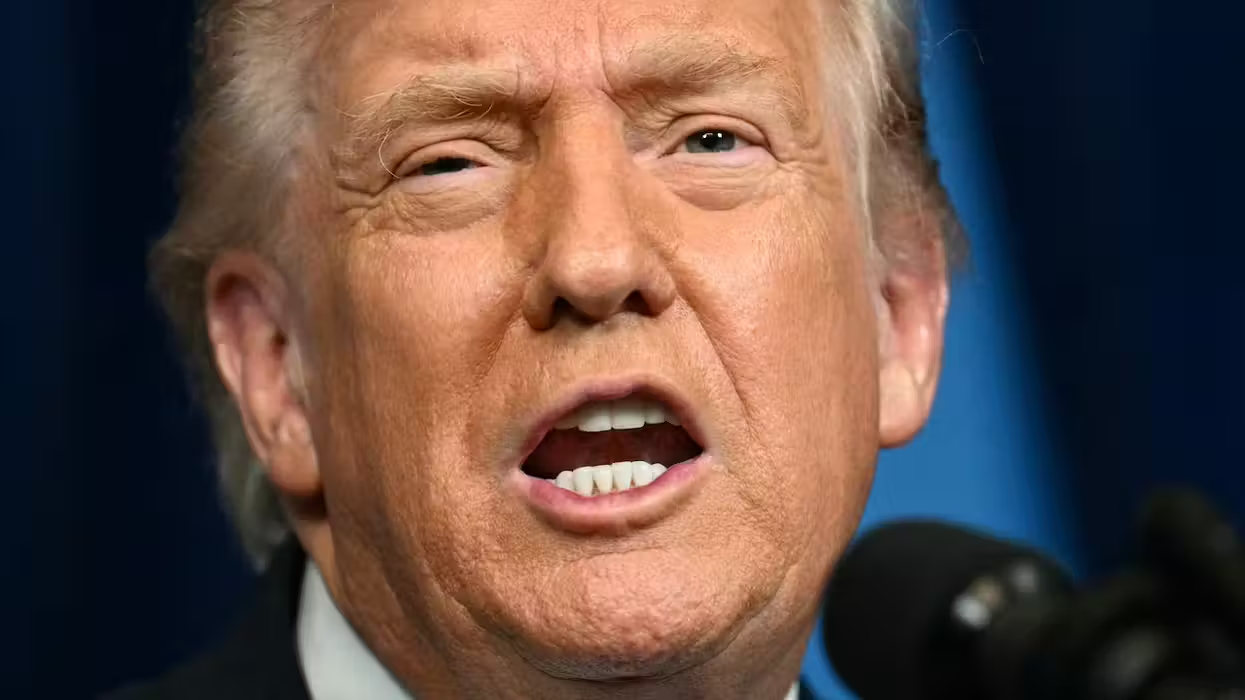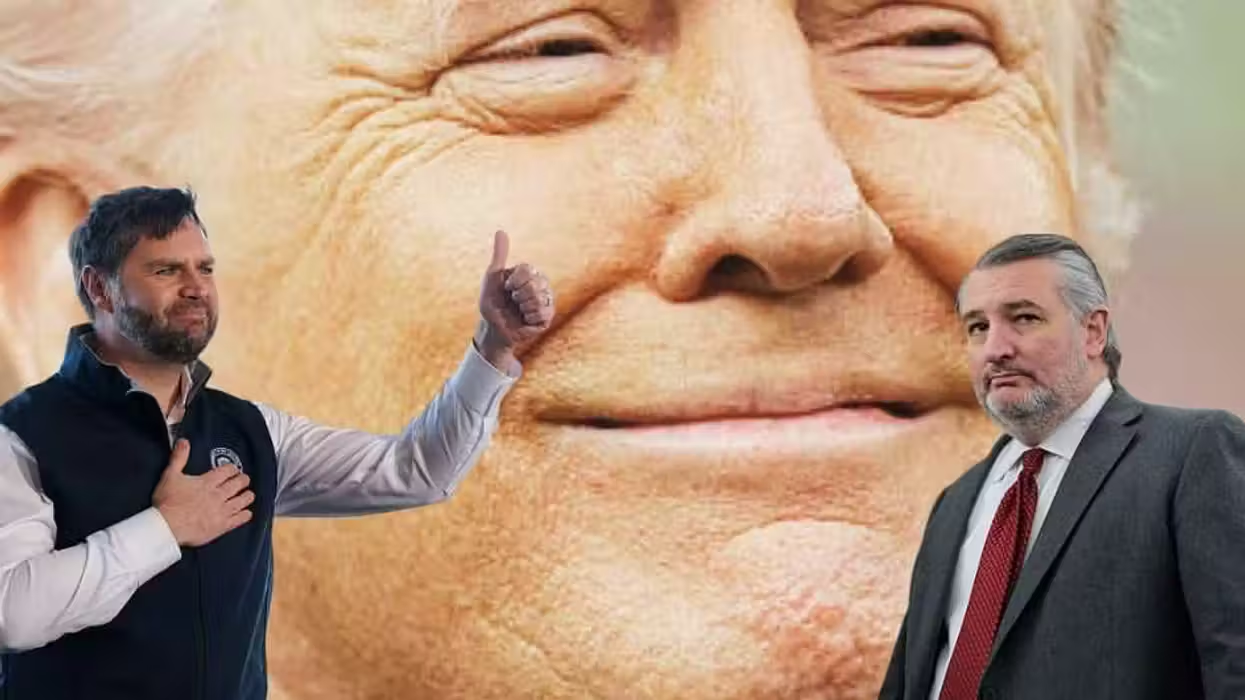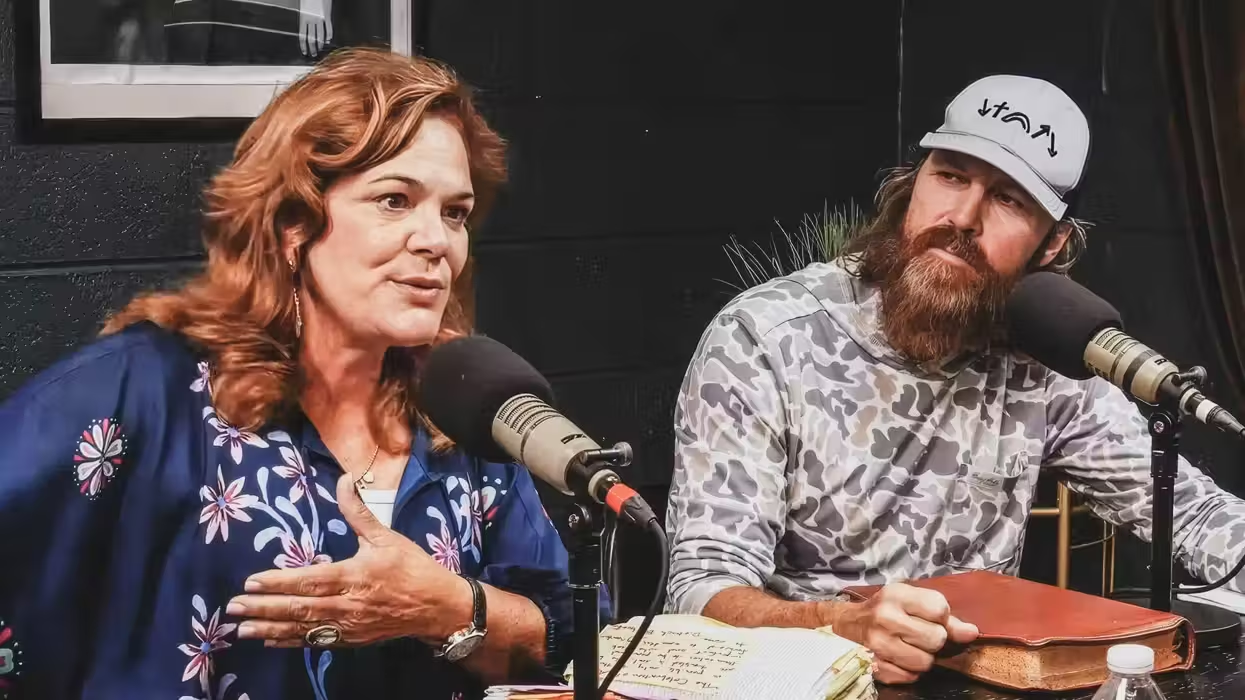This article is part of a series on Guns in America that explores the use of firearms in our country and the debate over gun control. This is an editorially independent series sponsored by Tactical Firearms Training Secrets.
--
Story Highlights:
- Guns played a special role in framing and shaping America's founding and culture
- The NRA, since its founding in 1871, has shaped the nation's gun culture
- Federal gun control laws date back to 1927 with the Mailing of Firearms Act
- Key firearms control legislation was also passed in 1934, 1968, 1986, 1993 and 1994
- Renewed calls for an assault-weapons ban are being met with skepticism amid misinformation
--
Editor's note -- We'll be discussing this story and all the day's news during our live BlazeCast from 12pm-1pm ET...including your questions, comments & live chat:
Guns are an integral and celebrated part of American history and culture. From their presence in the days preceding the American Revolution to their role in contemporary entertainment, firearms continue to enjoy a prominent societal standing.
Removing guns from the nation's formative story is an impossibility, but the cultural impact of firearms goes well beyond the founding of our nation. Just think about the Red Ryder BB gun and its prominence in "The Christmas Story" or the legends surrounding famed Wild West outlaw Billy the Kid. There's also Buffalo Bill, whose military experience and entertainment exploits converged and greatly impacted the historical narrative. And who could forget American sharpshooter Annie Oakley, the nation's first female superstar?
Guns have became so prevalent and coveted as a result of the their role in early American history that, today, it is "almost as though [they are] in our DNA," Tom Gresham, a gun expert and the host of "Gun Talk," said in an interview with TheBlaze.
The U.S. gun-ownership rate, while down slightly from past years, remains extremely high. In 2012, Gallup found that 43 percent of households report having at least one firearm. With an estimated 270 million guns in America, statistics corroborate that the American people are the most heavily-armed in the world, as CNN notes (Yemin is a distant second).
Many Americans view guns as a symbol of the historic quest to secure and protect personal freedoms, and they believe fervently that their right to bear arms will ensure protection against those who seek to subjugate them. Others see guns as a threat to their personal safety, with violence such as the massacre of school children in Newtown, Conn., serving as a solemn reminder of the dark side of guns in America.
Ultimately, firearms also have come to be a symbol of two differing views on the role of government in society, said historian Clayton Cramer.
"To much of America, a firearm is a symbol that you are a citizen, a responsible person who can be trusted with an instrument of considerable power that enables you to protect yourself, your family, and your property," Cramer told TheBlaze. "To the elite, a firearm is a symbol of barbarism and a lack of trust of one's fellow citizens and government."
It is through these two starkly-different lenses that the current debate about guns is argued. However, one cannot tackle the issue on either side without considering its roots.
 This February 4, 2013 photo illustration in Manassas, Virginia, shows a Remington 20-gauge semi-automatic shotgun, a Colt AR-15 semi-automatic rifle, a Colt .45 semi-auto handgun, a Walther PK380 semi-auto handgun and various ammunition clips with a copy of the US Constitution on top of the American flag. Credit: AFP/Getty Images
This February 4, 2013 photo illustration in Manassas, Virginia, shows a Remington 20-gauge semi-automatic shotgun, a Colt AR-15 semi-automatic rifle, a Colt .45 semi-auto handgun, a Walther PK380 semi-auto handgun and various ammunition clips with a copy of the US Constitution on top of the American flag. Credit: AFP/Getty Images
THE HISTORY: THE ROOTS OF AMERICA'S GUN CULTURE
It was in 1791 when the Bill of Rights was ratified and America's new-found government officially adopted gun rights as one of the most pressing national freedoms. After its acceptance, the Second Amendment opened the door for the general public to legally purchase and possess firearms under the umbrella of a new government structure. While it's clear that the nation's founders wanted to grant citizens the right to bear arms, contemporary debate surrounds the historical nature of the amendment and its practicality and applicability in modern times.
But before we move too deeply into that history, keep in mind that the traditional roots of gun ownership in America are profound and precede the historic actions taken in 1791. By the time the American Revolution concluded, the colonists had already used weapons in battles against both Native Americans and the English regime. After all, firearms were on U.S. soil well before the U.S. took official form.
"Because we have guns, we were able to have the U.S.," Gresham explained. "The people who were in what is now in [America] came to escape oppression -- and part of that was when policemen would outlaw crossbows and armor. The people came here to escape that very kind of control."
 This photo provided by the New Jersey Institute of Technology shows a 9 mm semi-automatic handgun configured with transducers to its handle that can detect the grasp of an authorized user. To gun rights groups, the idea of using technology to control who can fire a gun smacks of a limitation on personal rights, particularly if it might be mandated by government. At the same time, some gun control advocates worry that such technology, by making guns appear falsely safe, would encourage Americans to stock up on even more weapons then they already have in their homes. Credit: AP
This photo provided by the New Jersey Institute of Technology shows a 9 mm semi-automatic handgun configured with transducers to its handle that can detect the grasp of an authorized user. To gun rights groups, the idea of using technology to control who can fire a gun smacks of a limitation on personal rights, particularly if it might be mandated by government. At the same time, some gun control advocates worry that such technology, by making guns appear falsely safe, would encourage Americans to stock up on even more weapons then they already have in their homes. Credit: AP
In fact, firearms in the hands of those living here were necessities in order for the Revolution to be won. The colonists, having already had their rights stripped away in their homelands, had come to America for a better life -- one in which the government didn't restrict their freedoms to practice their faith, possess weapons and openly speak out on the issues of the day; recalling this history is essential when framing today's gun debate.
Most men in what is now America owned guns prior to the Revolution for both self-defense and hunting, according to Cramer, who has extensively studied and documented gun rights in American history. The colonial governments and, at one point, even the U.S. government, required that all male citizens of militia age have a gun in their home.
"This happened infrequently after the War of 1812, but as late as World War II, Alaska, Oregon, and Maryland, among others, called on the unorganized militia to provide protection against invasion in the first year or so of the war," Cramer explained.
THE SECOND AMENDMENT
The Second Amendment affirms "the right of the people to keep and bear Arms," a central tenant that the majority of Americans embrace (the full text reads: "A well regulated militia, being necessary to the security of a free state, the right of the people to keep and bear arms, shall not be infringed"). But debate over the past century has surrounded just how far this sentiment should be taken.
To put it all into perspective, the Founders created the Second Amendment during a time when there was a need to protect Americans from central and state governments that new-found Americans viewed with deep skepticism. In fact, many people, recognizing the nation's fragility, feared what might happen if the government ran amok, thus they sought to maintain military might among themselves by allowing guns in the hands of the general public.
 A women fires a handgun at the 'Get Some Guns & Ammo' shooting range on January 15, 2013 in Salt Lake City, Utah. Lawmakers are calling for tougher gun legislation after recent mass shootings at an Aurora, Colorado movie theater and at Sandy Hook Elementary School in Newtown, Connecticut. Credit: Getty Images
A women fires a handgun at the 'Get Some Guns & Ammo' shooting range on January 15, 2013 in Salt Lake City, Utah. Lawmakers are calling for tougher gun legislation after recent mass shootings at an Aurora, Colorado movie theater and at Sandy Hook Elementary School in Newtown, Connecticut. Credit: Getty Images
There's a debate among scholars when it comes to the founders' reasons for pushing for the Second Amendment. According to Stephen Halbrook, a Washington, D.C.-based lawyer and scholar in this arena, the constitutional provision was crafted because the founders wanted the same rights they had as Englishmen. As Voice of America notes (VOA) reports, many colonists lost freedoms leading up to the American Revolution, including the right to bear arms. However, others disagree. VOA highlights another perspective:
Fordham University historian Saul Cornell says, "What's easy to forget is that the Second Amendment actually poses an enormous burden on the citizenry." For Cornell, the Second Amendment is more concerned with maintaining national defense through citizen militias than with protecting individual gun ownership rights.
"I don't think that many people on either side of the modern gun debate -- gun control or gun rights -- really would be happy if we went back to the original meaning of the Second Amendment, because for gun control people it would involve a much greater militarization of society," he said.
"We would be living in a country much more like Israel or Switzerland. And on the other side, it would involve much greater regulation because you could not muster the militia without regular inspections of firearms, without much more training. So you have to be careful what you wish for, because sometimes you may get it."
And still others would argue that times have changed and that, perhaps, it's time for an amendment to refine the rights afforded by the controversial amendment. Today, gun technology far outpaces what was available during the Constitution's framing. Then unimaginable, 30-round magazines have become a reality -- one that both sides of the debate are currently arguing over fervently. Along the way, legislative action, many times as the result of gun tragedy, framed the debate.
Regardless of the context that existed in 1791, gun culture continued to grow and progress in the decades following the nation's founding.
After the ratification of the Bill of Rights in 1791, the next major milestone in U.S. gun culture came in 1871, when the National Rifle Association (NRA) was formed by Col. William C. Church and Gen. George Wingate (former Union Army veterans). According to the organization's official account of its history, Church and Wingate decided to launch the NRA after they realized the poor marksmanship skills that were possessed by their soldiers during the war. A newspaper article penned by Church at the time said that the group was founded to "promote and encourage rifle shooting on a scientific basis."
It didn't take long for the NRA to grow in popularity, as the group promoted marksmanship and shooting as a sport. In 1902, the organization pushed for rifle clubs at major colleges, universities and military academies and, by 1906, a youth program was in full swing. Naturally, with the NRA has always come controversy. By the time 1934 rolled around, the organization launched its Legislative Affairs Division "in response to repeated attacks on the Second Amendment rights."
THE BEGINNINGS OF AMERICA'S GUN CONTROL MOVEMENT
In 1927, Congress cracked down on Prohibition-era violence, implementing the first ever federal gun restriction; it was called the Mailing of Firearms Act. According to LiveScience.com, the law banned mail-order sales of handguns and other concealable weapons. Prior to the 1920s, though, gun control was never really mentioned at the federal level, although states did apparently implement discriminatory laws that kept weapons out of the hands of African Americans at the time.
It was in 1934, though, that Congress passed America's first major gun control legislation, signed into law by Democratic President Franklin D. Roosevelt (FDR). The National Firearms Act was intended to hamper gangster behavior during Prohibition. The controversial law placed a tax on the production and transfer of automatic guns, shotguns and rifles.
The Bureau of Alcohol, Tobacco, Firearms and Explosives (ATF) web site claims that the original act also placed "a special (occupational) tax on persons and entities engaged in the business of importing, manufacturing, and dealing in NFA firearm." All guns covered under the act were also required to be registered with the Secretary of the Treasury.
In 1938, the Federal Firearms Act was passed. It required gun sellers to obtain a license from the Internal Revenue Service to sell guns and to maintain records of purchases. The law, also signed by FDR, put restrictions on felons purchasing firearms and ammo as well.
 Credit: Getty Images
Credit: Getty Images
On the legislative front, the next bill monitoring guns in America came in 1968 when Congress passedThe Gun Control Act, a law that sought to control interstate trafficking of guns. It was this law, following assassinations during that decade (President John F. Kennedy, Sen. Robert F. Kennedy and Martin Luther King, Jr.), that raised the age for purchasing legal handguns from licensed dealers to 21. Additionally, the new regulations cracked down on guns getting into the hands of felons, the mentally ill and drug users. The ATF web site has more about this the law, which was sponsored by Democratic Sen. Thomas J. Dodd:
Under the provisions of the Gun Control Act of 1968 (GCA), convicted felons and certain other persons are prohibited from possessing or receiving firearms. The GCA provides the Attorney General with the authority to grant relief from this disability where the Attorney General determines that the person is not likely to act in a manner dangerous to the public safety and granting relief would not be contrary to the public interest. The Attorney General delegated this authority to ATF.
"Today we begin to disarm the criminal and the careless and the insane," President Lyndon B. Johnson said when he signed the bill. "All of our people who are deeply concerned in this country about law and order should hail this day."
While Johnson had praise for the law, he was dissatisfied that a national gun registry wasn't included.
"If guns are to be kept out of the hands of the criminal, out of the hands of the insane, and out of the hands of the irresponsible, then we just must have licensing," the Democratic president said at the time. "If the criminal with a gun is to be tracked down quickly, then we must have registration in this country."
Before continuing, it's important to note the relation between gun control efforts in 1934 and 1968. While the former law required registration of guns that were under 18 inches in length, the Supreme Court found in 1968 that such a provision was unconstitutional. This ruling was reached based on the notion that gun owners would potentially be self-incriminating if they tried to register a gun that was illegal in their home state. Registration was inevitably removed from the law's text.
FIREARMS CONTROL OVER THE PAST THREE DECADES
Next, came two additional pieces of legislation in 1986 -- The Firearm Owners' Protection Act and the Law Enforcement Officers Protection Act. The former prevented felons from owning and possessing guns and ammunition. The Firearm Owners' Protection Act, according to the Washington Post, also limited the number of times that the ATF could inspect gun dealers (something gun rights advocates likely applauded). The act was sponsored by Democratic Rep. William Hughes.
The Law Enforcement Officers Protection Act also became law in 1986, halting the manufacturing, importing and selling of ammunition with the ability to penetrate a bulletproof vest (i.e. "armor-piercing ammunition"). This particular bill, which was sponsored by Dem. Rep. Mario Biaggi, also called for a minimum five-year sentence for anyone carrying guns with the capability to permeate said armor. Both bills were signed into law by Republican President Ronald Reagan. But gun control initiatives didn't end there.
The next legislative push to crack down on guns resulted from yet another assassination attempt. In 1981, John Hinckley, Jr.'s failed attempt at killing President Ronald Reagan left his press secretary James Brady partially paralyzed (on the left side of his body). It was this scenario that led to yet another legislative move to rectify firearm violence, as Brady and his wife, Sarah, became influential gun control proponents.
As a result of their efforts, in 1993, Congress passed the The Brady Handgun Violence Prevention Act, a law that was sponsored by Democratic Sen. Chuck Schumer, requiring the United States Attorney General to assemble a National Instant Criminal Background Check System (NICS) for Federal Firearms Licensees. The system, which was put into place in 1998 following the law's passage, does not monitor firearms that are bought and sold privately (between hunters and in other similar scenarios).
 Credit: Getty Images
Credit: Getty Images
But as most gun enthusiasts know, it was 1994 that brought with it one of the most contentious laws: The Violent Crime Control and Law Enforcement Act. Also known as the "Assault Weapons Ban," this law, as NPR notes, "banned the manufacture, use, possession and import of 19 types of assault weapons, including AK-47s and Uzis." The original law (sponsored by Democratic Sen. Dianne Feinstein) expired in 2004, but the Sandy Hook Elementary School shooting has some calling for it to be reinstated. Last month, Feinstein, once again, introduced a bill that would reinstate the ban.
Some, though, have found themselves frustrated with this push to further crack-down on weapons. Female competitive shooter Jessie Duff recently appeared on Fox News’ "Hannity" to discuss some of the misconceptions that surround so-called "assault weapons." She noted that there are deeply-held beliefs and fears about these guns that are simply not rooted in reality, as fully automatic weapons are not available to consumers.
"These are all semiautomatic firearms and when you pull the trigger once it fires once," Duff explained. "They don’t spray bullets everywhere like you see in Hollywood or in the movies or video games."
The debate over gun control in America forges on today, with the Washington Post, perhaps best encapsulating just how divisive the issue is, particularly when it comes to "assault weapons." The shooting at Sandy Hook is just the latest in a slew of attacks that has politicians and leaders at the highest levels calling for increased regulations, with others dismissing more gun laws as unneeded and ineffective.
"The gun-control and gun-rights camps don’t even speak the same language, with one side arguing that the Second Amendment can’t possibly mean the right to own an assault weapon, while the other side says 'assault weapon' is a pejorative invented by an urban elite that wouldn’t know an AR-15 from an AK-47," the outlet writes.
It is only with the historical context in mind that one can even approach the contentious debate surrounding guns. The political flammability is evidence of how influential the issue remains in American society.
Check back next Tuesday for another installment in our "Guns in America" series.
Carousel image courtesy of Shutterstock.com.

 This February 4, 2013 photo illustration in Manassas, Virginia, shows a Remington 20-gauge semi-automatic shotgun, a Colt AR-15 semi-automatic rifle, a Colt .45 semi-auto handgun, a Walther PK380 semi-auto handgun and various ammunition clips with a copy of the US Constitution on top of the American flag.
This February 4, 2013 photo illustration in Manassas, Virginia, shows a Remington 20-gauge semi-automatic shotgun, a Colt AR-15 semi-automatic rifle, a Colt .45 semi-auto handgun, a Walther PK380 semi-auto handgun and various ammunition clips with a copy of the US Constitution on top of the American flag. 
